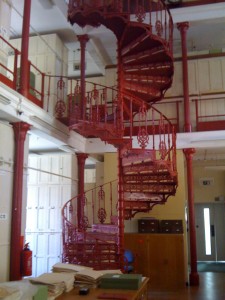In 2009, the Royal Botanical Gardens at Kew celebrate their 250th anniversary as a national and world treasure. Kew, itself (formerly or originally known as “Cayho”) began on the river bank at the lowest point along the Thames where people could cross the river on foot. It is surmised that in 54 B.C. Julius Caeser, himself, crossed at this point. The Gardens (including their famed Library and Herbarium) were declared a UNESCO “World Heritage Site” in 2003.
The preceding three centuries were critical for Kew’s development. During this period the locale became the home, first, of courtiers to the Court, next of “king makers” with their grand houses and estates, and ultimately of royalty itself, who built palatial residences. As this was going on, the gardens were constantly enriched with new exotic plants, but equally importantly, with funding to establish them on a solid footing.
The UNESCO inscription of Kew into the list of World Heritage sites reads:
Since their creation in 1759, the gardens have made a significant and uninterrupted
contribution to the study of plant diversity and economic botany.
The Gardens’ Library houses one of the most prestigious collection of botanical works in the world. This collection is, of course, critically important today, as the world struggles to find solutions to the problems of global warming, feeding the hungry, providing sustainable high-yield agricultural productivity and learning what can be medicinally useful from the enormous diversity and startling capabilities that have evolved within the plant kingdom.
 |
We spoke at length with David Simpson, Associate Curator of the Herbarium, and Christopher Mills, Head of Library, Art and Archives. The sessions couldn’t have gone more smoothly, and the interviews (intended to be preliminary, but proving to be entirely usable) were fascinating, informative and interesting.
 |
The “built environment” at Kew (especially the old Herbarium, still in use) is beautiful; the gardens are a delight; and the library is welcoming. Each has contributed to the recognition that the Royal Botanical Gardens are:
“rich in history and with the Earth’s largest botanical
and horticultural collections under its care.”
The Library is presently being expanded to occupy a brand new modern building (which was in the final stages of construction as we were visiting). The new building will provide more protection to its precious collection of books, documents and drawings, but also more space and comfort for its use. The bright and spacious reading room will make the library’s unique resources freshly and more conveniently available to the scholars, botanists, scientists and students from around the world who beat a path to its welcoming doors.
The Library at the Royal Botanical Gardens at Kew promises to be a first-rate GLOW program!